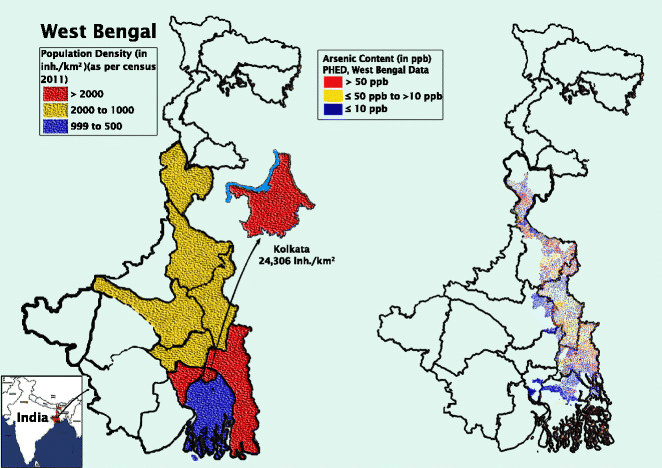
West Bengal, a state in eastern India, is grappling with a severe and silent health disaster arsenic contamination in its groundwater. This harmful threat has impacted countless individuals, presenting serious health dangers and putting strain on the state’s public health infrastructure.
The Origin of Arsenic Contamination
Arsenic contamination in West Bengal’s groundwater can be traced back to natural geological processes. The region’s alluvial soil, formed by the deposition of sediments from rivers such as the Ganges, contains high levels of arsenic-bearing minerals. Over time, these minerals leach into the groundwater, contaminating it with dangerous levels of arsenic.
Human activities have exacerbated the problem. Extensive extraction of groundwater for agricultural and domestic use has disturbed the natural balance, causing arsenic to mobilize from the soil into the water table. This has turned a naturally occurring issue into a full-blown health crisis.
Health Implications
Arsenic is a potent toxin that can cause a range of health issues when ingested over long periods. Chronic exposure to arsenic-contaminated water leads to arsenicosis, a condition characterized by skin lesions, pigmentation changes, and hardening of the skin. Long-term exposure can also cause more severe health problems, including cancers of the skin, bladder, kidney, and lung, as well as cardiovascular diseases and diabetes.
In West Bengal, the symptoms of arsenic poisoning often go unnoticed in the early stages. By the time visible signs appear, the damage is usually irreversible. The most affected districts include Malda, Murshidabad, Nadia, and North 24 Parganas, where thousands of people suffer from the debilitating effects of arsenic poisoning.
Social and Economic Impact
The health crisis has profound social and economic implications. Affected individuals face stigmatization and discrimination due to their appearance and health conditions. Families are burdened with the high cost of medical treatments, which can push them further into poverty.
Moreover, the contamination of groundwater has jeopardized agricultural productivity. Farmers who rely on contaminated water for irrigation inadvertently introduce arsenic into the food chain, posing a risk to consumers. This has led to a vicious cycle of health and economic decline, affecting the overall well-being of the community.
Efforts and Challenges
Addressing the arsenic contamination crisis requires a multi-pronged approach involving government intervention, scientific research, and community participation. The Indian government has initiated several programs to provide safe drinking water, such as installing arsenic removal filters and promoting alternative water sources like rainwater harvesting.
However, these efforts often face challenges such as inadequate infrastructure, lack of awareness, and funding constraints. Ensuring the sustainability of these initiatives requires continuous monitoring, maintenance, and community engagement.
Scientists and researchers are also working to develop innovative solutions to tackle the crisis. Bio-remediation techniques, which use plants and microorganisms to remove arsenic from the soil and water, show promise as a sustainable and cost-effective approach.
Community Involvement
Community awareness and participation are crucial in combating arsenic contamination. Educating people about the risks of arsenic exposure and safe water practices can empower communities to take preventive measures. Community-led initiatives, such as setting up safe water kiosks and regular water testing, can play a pivotal role in mitigating the crisis.
The arsenic contamination in West Bengal’s groundwater is a silent health disaster that requires urgent and coordinated efforts. By addressing this issue holistically, we can protect public health, improve the quality of life, and ensure a safer future for the affected communities.


